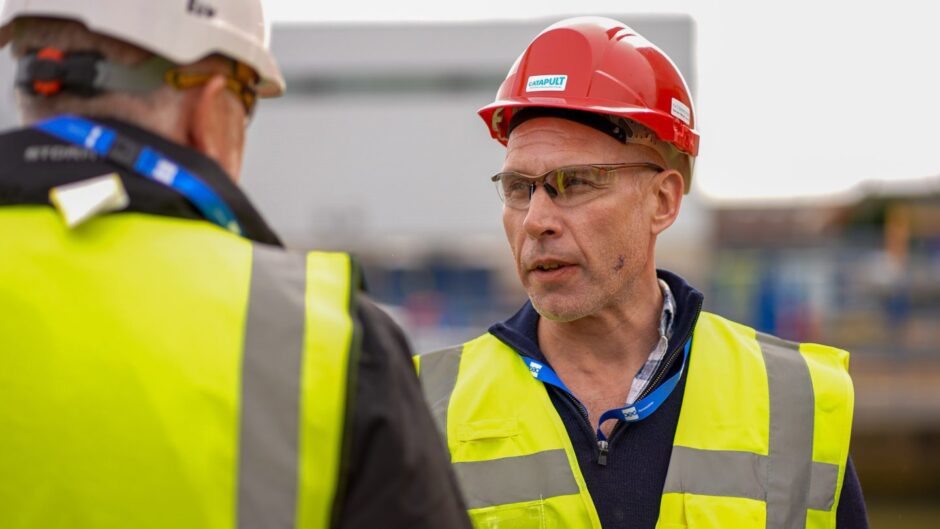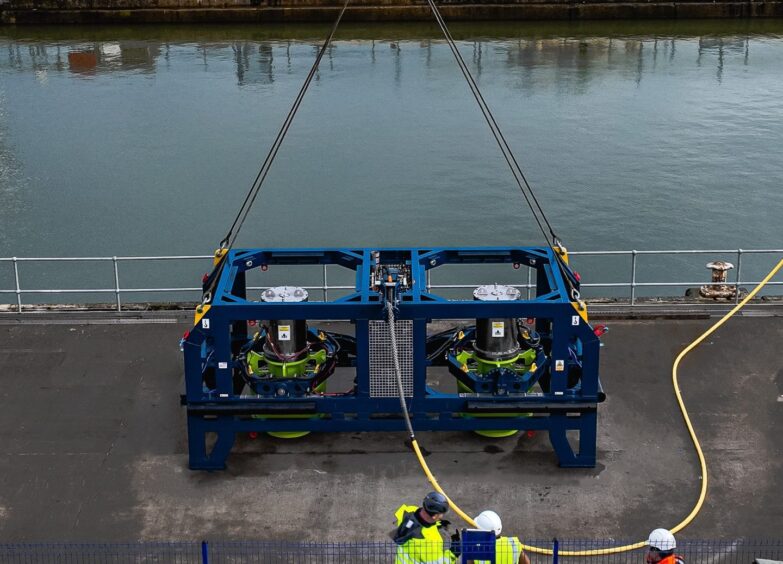
As the UK pushes forward with its energy transition ambitions OEG Renewables wants to see domestic “Tier One” contractors in green energy.
“We don’t really have a Tier One service provider in the renewable segment and yet we have more offshore wind construction going on in the UK than anywhere outside of China,” said OEG Energy Group’s chief commercial officer David Carr.
Mr Carr says that the lack of a firm like this “is to our detriment” as cash is being sent to European firms rather than staying in the UK.
“It’s the most expensive part of the construction and right now developers in the UK are sending all that money to Europe because we don’t have a player in that, that part of the supply chain here.”
Firms like Seimens (German-headquartered), Saipem (Italian), and Deme (Belgian) are all counted among Europe’s Tier 1 offshore wind contractors with competition heating up as firms from other parts of the world look to get in on the action.
These businesses supply services or equipment such as turbines, jackets and cables for offshore wind projects in the North Sea and beyond.
Mr Carr explained that he sees OEG becoming “the leading integrated solution provider for renewables,” working alongside these solely green energy contractors.
OEG Energy Group is based in Kintore, Aberdeenshire, and has two main businesses, OEG Renewables and OEG Offshore.
The renewables wing is a subsea and topside solutions firm that supports the offshore wind sector.
The Group has been on an acquisition spree as of late, picking up businesses in the UK and abroad.
Supply chain seeing ‘very little support’
The trend of business in the offshore renewables sector going overseas is one that has been exacerbated by “the current administration,” OEG Energy Group’s chief commercial officer argued.
He said that the supply chain has seen “very little support” when it comes to “seeding the supply chain.”
Mr Carr continued: “They’re very keen to encourage developer investments and there has been some support in ports and infrastructure, but frankly the high-tech manufacturing engineering that the UK is so good at has not been strongly supported in recent years.”
Where “massive investment” coming into the renewables supply chain from is the “former oil and gas companies like Shell, BP and TotalEnergies,” Mr Carr said.
“That is really where the transformation is taking place, the massive investment that some of those companies are making into areas like the Freeport in Edinburgh, the Freeport at Cromarty Firth, innovation areas like we have over in Liverpool and like we have here in the north-east [of England].”
This private investment is where OEG sees change coming in the UK renewables market as those major oil and gas companies continue to diversify their portfolios into offshore renewables.
David Carr continued: “That’s where I really see where the big change is going to be, when those massive companies really start to take over the lion’s share of the offshore wind development.”
However, wind is becoming an increasingly competitive market as firms in Europe, the US, Japan, Australia and Taiwan vie for the attention of developers.
With this in mind, Mr Carr said: “I would like to see more investment into the UK supply chain so that we can not only take care of our own offshore wind construction but be a leading force in exports in the future as well.”
New tech arises from OEG acquisitions
Following a string of acquisitions OEG Energy Group reported a 35% increase in revenues across 2023, achieving $434 million (£343m) in turnover.
Late last year OEG chief executive officer John Heiton told Energy Voice that the boost in funds supported the firm to continue work on as many as 12 acquisitions in the offshore wind sector, primarily in mainland Europe.
“Our most recent acquisitions at OEGR (OEG Renewables) have been two companies in the Netherlands,” Mr Carr explained.
“So, we are increasing our footprint into the European market as well, getting closer to the operators and developers over there and really having a British-based international integrated service provider.”
He later added: “Another key thing around our acquisition strategy is clustering these acquisitions in places next to one another in the value chain.”
Currently, OEG is seeing the fruits of its labour with acquisitions as one of the firms it recently picked up, SeaJet Systems is putting the finishing touches on its HYDROMOLE all-Electric Controlled Flow Excavation technology.
This device was engineered and manufactured in the UK alongside British firm Soil Machine Dynamics (SMD).
The HYDROMOLE has been successfully tested at the ORE Catapult research centre in Blyth.
This device is set to be used for trenching, burial and reburial of cables for offshore renewables using a patented jet technology.
With this new tech there is “no risk of pollution to the water” and operating the HYDROMOLE is “incredibly quiet,” the OEG Energy Group’s chief commercial officer said.
Recommended for you


 © Supplied by SEAJET
© Supplied by SEAJET © Supplied by SEAJET
© Supplied by SEAJET